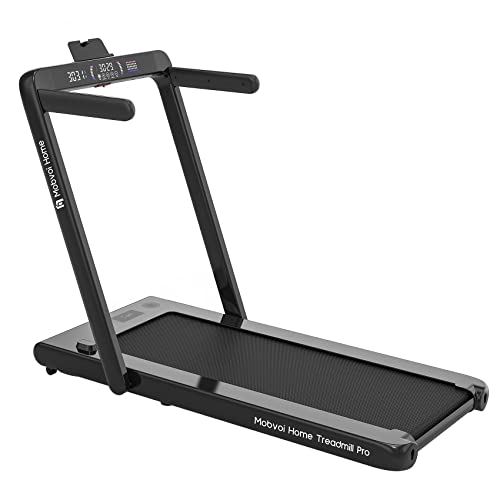The No. One Question That Everyone Working In Tread Mill Should Be Able To Answer

Treadmills: A Comprehensive Guide to Understanding Their Functionality, Benefits, and Appropriate Selection
Intro
Treadmills have become a staple in contemporary physical fitness regimens, both in homes and fitness centers worldwide. They offer a convenient and efficient method to keep cardiovascular health, increase endurance, and assist in weight management. This article checks out the various types of treadmills, their advantages, features to think about when acquiring, and some FAQs to assist users in making informed decisions.
Types of Treadmills
When it comes to selecting a treadmill, it is crucial to understand the various types offered in the market. Here are the main categories:
1. Manual Treadmills
- System: These treadmills have an easy style and depend on the user's efforts to move the belt.
- Pros: More affordable, quieter operation, no electricity needed.
- Cons: Limited features, may not offer the very same variety of exercise intensity.
2. Motorized Treadmills
- System: Powered by a motor that drives the belt, allowing users to walk or perform at a set pace.
- Pros: Greater variety of speeds and inclines, equipped with numerous functions such as heart rate screens and exercise programs.
- Cons: More expensive and may need more upkeep.
3. Folding Treadmills
- System: Designed for those with restricted space, these treadmills can be folded for simple storage.
- Pros: Space-saving, frequently motorized, flexible functions.
- Cons: May be less resilient than non-folding models.
4. Commercial Treadmills
- System: High-quality machines developed for use in gyms and fitness centers.
- Pros: Built to hold up against heavy use, advanced features, frequently include warranties.
- Cons: Pricey and not ideal for home use due to size.
5. Curved Treadmills
- System: A special design that permits users to propel the belt utilizing their own energy.
- Pros: Offers a more natural running experience, promotes better running type.
- Cons: More costly and can be noisier.
| Treadmill Type | Pros | Cons |
|---|---|---|
| Manual | Budget friendly, no electrical power required | Limited functions |
| Motorized | Range of speeds, advanced features | Maintenance required |
| Folding | Space-saving, frequently motorized | May lack resilience |
| Commercial | Built to last, professional-grade features | Costly |
| Curved | Natural running experience, promotes great type | Higher rate |
Benefits of Using Treadmills
Treadmills use various benefits that can contribute to one's total health and fitness goals. Some of these advantages include:
- Convenient Workouts: Treadmills enable users to work out indoors no matter weather condition conditions.
- Cardiovascular Health: Regular use can enhance heart health by increasing endurance and promoting healthy blood circulation.
- Weight Management: Effective for burning calories, which assists in weight-loss and management.
- Personalized Workouts: Users can control speed, slope, and duration to develop tailored exercise experiences.
- Safety: Treadmills offer a predictable surface area, decreasing the risk of falls compared to outdoor running.
- Multifunctional: Many treadmills included functions like heart rate monitors, exercise programs, and even entertainment systems.
Choosing the Right Treadmill
When selecting a treadmill, possible buyers must think about numerous crucial aspects:
Features to Consider:
- Motor Power: Typically measured in horse power (HP), a motor strength of a minimum of 2.5 HP is suggested for serious runners.
- Belt Size: A longer and broader belt accommodates different stride lengths, offering comfort throughout workouts.
- Slope Settings: Adjustable slope features imitate outdoor hill running and can increase workout intensity.
- Weight Capacity: Ensure the treadmill can support the user's weight for security and durability.
- Console Features: Look for easy to use dashboards, exercise programs, and Bluetooth compatibility for streaming music or other functions.
Budget Considerations
- Under ₤ 500: Entry-level manual treadmills suitable for casual walkers.
- ₤ 500 - ₤ 1,500: Mid-range motorized treadmills that use more features and much better sturdiness.
- ₤ 1,500 - ₤ 3,000: High-end designs with innovative innovation, bigger motors, and longer service warranties.
- Over ₤ 3,000: Commercial-grade treadmills ideal for frequent usage in fitness centers or training facilities.
Often Asked Questions (FAQs)
1. How frequently should I use a treadmill?
It is suggested to use a treadmill at least three to five times a week, including different intensity levels for best results.
2. Can Treadmill Buy reduce weight by utilizing a treadmill?
Yes, constant use of a treadmill can add to weight reduction, specifically when combined with a well balanced diet plan and strength training.
3. What is Treadmill Buy to walk on a treadmill for newbies?
A speed of 3 to 4 miles per hour is an appropriate range for beginners. It's necessary to begin sluggish and gradually increase rate as comfort and endurance enhance.
4. Do I need to use a treadmill if I currently run outdoors?
Using a treadmill can offer extra advantages, such as controlled environments and varied workouts (incline, intervals) that are not constantly possible outdoors.
5. How do I keep my treadmill?
Regular upkeep consists of lubricating the belt, cleaning the deck and console, and checking the motor for optimal performance.
Treadmills are vital tools for those seeking to boost their physical fitness levels in a regulated and hassle-free manner. With different types available, understanding their features and benefits is crucial for making a notified purchase. By considering personal workout needs, space schedule, and spending plan restraints, individuals can discover the most ideal treadmill that fits their way of life. Integrating treadmill workouts into a balanced fitness routine can cause improved health outcomes and a pleasurable exercise experience.

